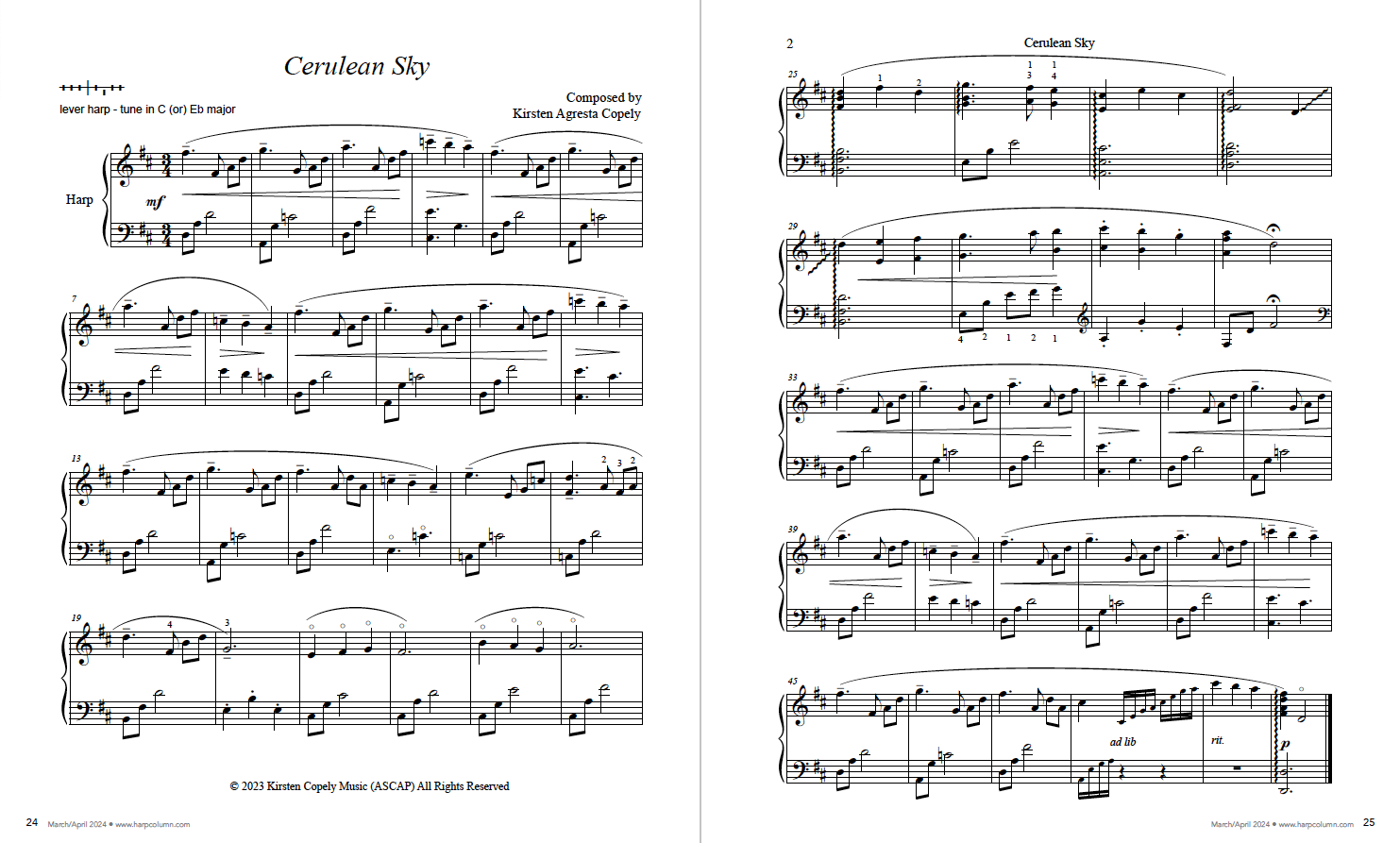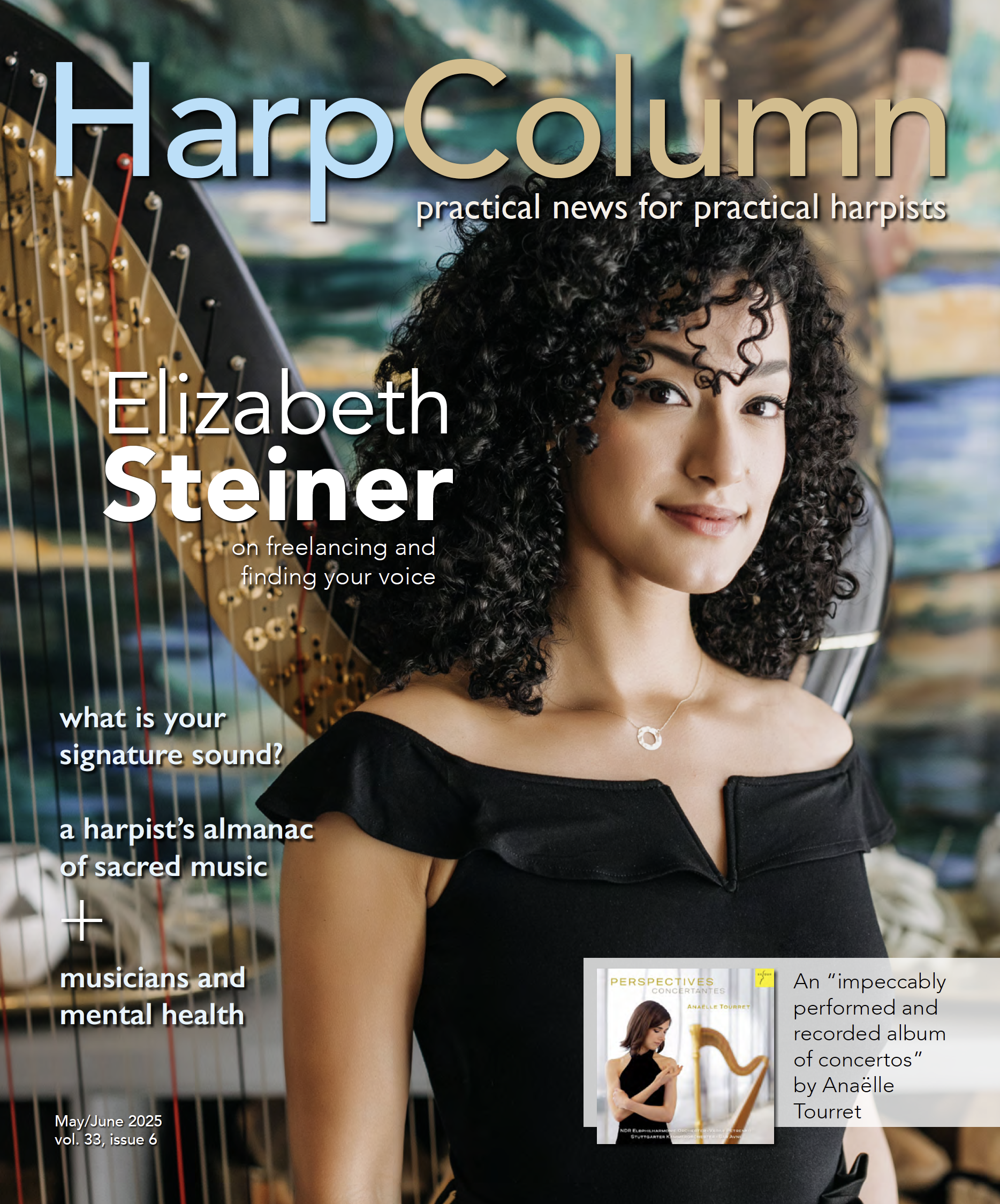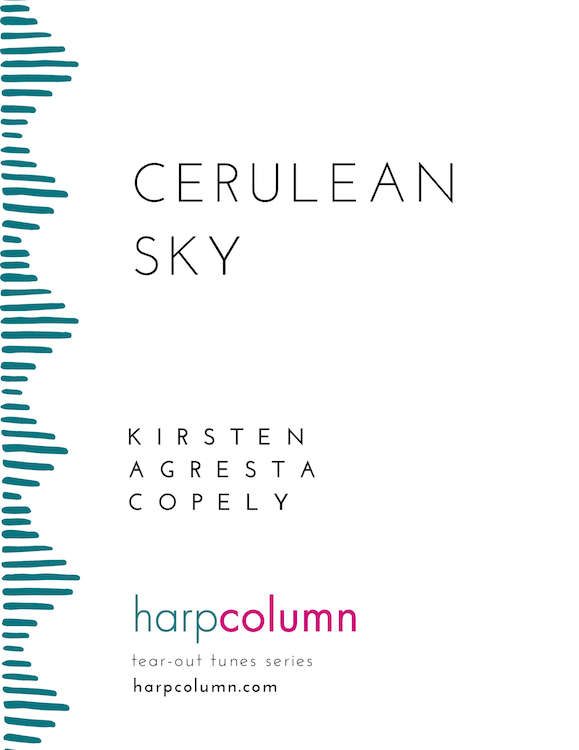
Download this issue to get this tune now!
Each installment of our Tear-Out Tunes series features a new piece written by one of the best harpist-composer-arrangers in the business. Each composer will tell you a little bit about their piece, and also give you some helpful tips for learning it and getting the most out of the experience.
The new piece (on the following pages) is yours to keep. We even put it right in the middle of the magazine so you can tear out the whole sheet and put your new tune on your music stand.
When Harp Column reached out to ask if I would compose a two-page piece for its series of Tear-Out Tunes, playable on either pedal or lever harp, I jumped at the opportunity. I immediately knew that the title would be “Cerulean Sky” since it would be featured in this March-April issue, and harpists would be looking for something cheerful to add to their music stands. I created this piece with the intent that it could be played in a solo performance, in church, at a wedding, or in home practice.
Drawing influence from nature and the universe is a frequent muse in my composition process. Some of my previous compositions include “Message From the Trees,” “I Am Water,” “Flower Moon,” and “The Silver Swan.” These titles and more are limitless for creating musical ideas that evoke vivid imagery and are audibly relaxing for the student and listener alike. For those harpists that are familiar with my work, this is a modern classical piece similar in style to “Inside, Looking Out.”
“Cerulean Sky” developed out of a simple melody that kept running through my head, and is matched with a word that depicts the deep blue of a clear sky. I wanted this song to be upbeat, fun, and feeling all the feels of the spring months ahead! (If you’re in a different climate or season, then hopefully this will brighten the day nonetheless.)
Now, let’s take a look at a few focus points:
Wide stretches: For the 4-2-1 patterns in the left hand, stretch your fourth finger out and roll up onto the next two notes, using oscillation of the wrist as an aid. This will help when there’s an interval of a seventh between your fourth and second fingers. Remember to close the fingers into the palm, and then gently lift up and out.
Light syncopation: This occurs in the left hand in measures 4, 12, 16, and again in the recap, measures 36 and 44. It should feel like a basic two-against-three pattern and mainly adds a little contrast to the otherwise legato patterns. Relax into it—it should feel smooth and unrushed.
Melody: The main melody uses the right-hand thumb to create a smooth legato melodic line (e.g. measures 1–16). This is a good section to practice your warm tone by pressing in and lifting the note out. The accent marks are notated mostly for recognition of the melody.
Harmonics: These are written in the right hand, which can be a source of frustration for many, so if you’re not confident with them, play the harmonics as natural notes an octave higher than written. Since they’re written in quarter-note succession in measures 21 and 23, it’s a good place to practice beautiful, bell-like sounds with a relaxed hand, and keeping the harmonics in steady time.
Evenly rolled chords: Starting in measures 25 and 28, you have the opportunity to work on rolling even chords from the left hand to the right. Pulling each finger into the palm as you roll upward will help make the chords even. Try to keep your rolls brisk in this section and bring out the top note as the melody. If you can’t manage the octave stretches in the right-hand chords, omit the bottom note.
Thumb slide: there is a right-hand thumb slide in measure 27 (with the third and fourth fingers underneath). Make sure both notes are in unison!
Glissando and arpeggio: You have two bars to practice a short glissando (up to a plucked note) in measure 29 and a hand-over-hand arpeggio in measure 48. This can be played ad libitum, so don’t feel like you need to keep it in a strict tempo. The piece is written in D major, however the C-natural is fixed throughout. There are no pedal or lever changes. Lever harp players can tune in E-flat and raise the B, E, A, and F levers or tune in C Major and raise just the F levers. The tempo can be moderate or more upbeat, depending on your level or how you feel when you sit down to play. It can have a gentle flow, or be more lively—whatever you choose! Creative ideas can spark from a flower, a poem, the wind in your hair, or the sand beneath your feet. Developing them takes patience, time, and dedication. Look up to the “Cerulean Sky” and find joy from what our beautiful world offers. •








